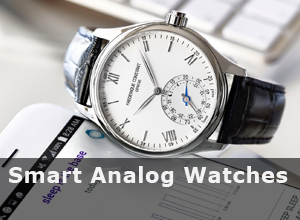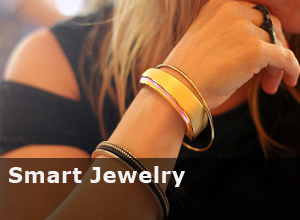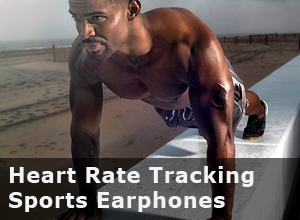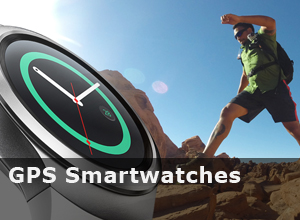Fitbit and Jawbone top the bill in the clash of the fitness trackers. There are plenty of other battles between other brands, but since their early releases into the revolutionary fitness tracking industry, these two have been doing fisty cuffs from the start.
The battle continues into 2015 with the Fitbit Charge HR vs Jawbone UP3. So which of these advanced fitness trackers will fight its way onto your wrist?
Fit and Build
Both bands have a watch style, adjustable stainless steel buckle. The Fitbit Charge HR is advertised as small, large and extra large, for wrist sizes from 5.5 to 9.1 inches. The Jawbone UP3 is advertised as ‘one size fits most’.
The Charge HR is 20 mm in width, the UP3 just 12.2 mm. So obviously the Charge is a little bulkier than the UP3.
The Charge HR band is made with flexible, durable elastomer. The UP3 is made from thermoplastic polyurethane.


Design and Looks
It’s hard to pick a winner in the looks department. Both bands come in various colours. The UP3 looks more like it could be a fashion accessory, it has a greater variation of styles and comes with different patterns and band types.

Display
The Fitbit Charge HR features a OLED display, so you don’t need to open the app to view your stats. Having info visible on the wrist is something that I prefer in a tracker, the lack of screen with the Fitbit’s previous tracker, the Flex has been rectified with the Charge series. The Charge HR display isn’t touchscreen, instead there’s a single button on the side, each press will show you a different stat. You can also activate the screen by double tapping on the top of the band, like you can with the Fitbit Flex.
Jawbone have elected not to give the UP3 a screen, instead it has three LED’s which flash different colours for different data, blue for sleep mode, orange for activities, and white for notifications.
Heart rate Monitoring
A different approach to heart rate monitoring is taken by both bands. The Fitbit Charge HR constantly monitors your heart’s BPM with the company’s new ‘PurePulse’ sensor.
According to Fitbit, constantly monitoring the heart’s BPM results in higher accuracy concerning calories burnt, plus the user can train with different intensities using their heart rate maximum. Using a tracker with constant HR monitoring will also allow you to see which things affect your heart rate, such as caffeine intake, emotional changes etc.
The sensors in the UP3 monitor your heart rate whilst you are sleeping, this gives you consistent readings of your overall heart health because the accuracy is not affected by heart rate variation caused by things like intakes of caffeine, exercise and emotions. Update: Continuous heart rate monitoring has now been added to the UP3.
The Jawbone UP3 goes a step further than the Charge HR as it uses a new tri-axis accelerometer and Bioimpendence sensors that measure galvanic skin response (GSR) or electrical skin conductance. The readings vary depending on the amount of moisture on the skin. UP3 also has the capability to track fatigue and respiration.
As far as optical heart rate monitors go, Fitbit PurePulse is one of the more accurate. Mio is generally accepted as the most accurate. However, if HRM accuracy is very important to you then an EKG chest strap is the way to go.
GPS
Neither the Fitbit Charge HR nor the Jawbone UP3 have a built-in GPS, so if you want to log your route for cycling or jogging, you’ll still need to take your smart phone with you.
Activity Tracking
Both the charge HR and UP3 deliver all the tracking essentials: distance, steps, calories burned, elevation and goals.
The Charge HR having a OLED display is always a bonus for me because it will give you real-time metrics with a quick glance. It also has the little bonus feature of displaying caller ID when your mobile rings. A recent update has brought automatic exercise detection to the Fitbit Charge HR.
With its new sensors, the UP3 has the capability to learn which sports you are participating in, some sports it will know straight away, but others are more difficult for the band to identify, those that are more difficult will be learned over time. The UP3 has the added feature of skin and ambient temperature monitoring.
Sleep Tracking
The Fitbit Charge HR features automatic sleep detection. It provides you with data about what times of the night you were least and most restless, Fitbit’s sleep tracking analysis isn’t their strongest feature as it’s pretty basic. The Charge HR has a vibration feature that can be set as an alarm, there are less pleasant ways of being woken up in the morning than a buzz on the wrist!
An update to the Jawbone UP3 means it’s now equipped it with automatic sleep detection, it’s also brought more accuracy. The Up3 is a more advanced sleep tracker than the Charge HR as it recognizes different sleep stages (REM and Non REM) and then offers advice on how to improve your snooze. The UP3 also has a vibration feature that can be set as an alarm.
Notifications
The Fitbit Charge HR vibrates and displays notifications on the OLED display, but it’s limited as it only works for incoming caller ID.
The UP3 vibrates and its LEDs flash white when you receive incoming calls, text, emails and social notifications. The UP3 has no display, so it doesn’t take the smartest of us to work out that you’ll need to grab your smartphone to read them.
App
Fitbit are known for having a decent app that lets you monitor progress over time, record sessions, share and compete with the Fitbit community and friends, earn badges, and log what you’re eating either manually or with a barcode scanner. You can compete with others on the Fitbit Leaderboard, and invite others to join in by hooking up the app to Facebook, or using the Invite via email feature. The Fitbit App is Compatible with iOS, Android and Windows Phone. Fitbit devices now work with the popular fitness app Strava, this bonus adds plenty of kudos to the Charge HR.
Jawbone are also known for having a decent fitness app. They have revamped the app for the Up3 which has a Smart Coach feature that learns about its wearer over time. The UP App enables you to log your calories by inputting what you eat either manually or with a barcode scanner. There is also a Food Score feature which will let you know how healthy your meals are, on the scale from 1-10. With the UP App you can share your activity tracking stats on social networks like Facebook and Twitter, and you can create a team of family and friends, cheer them along and set challenges. The UP App is Compatible with iOS and Android.
Swimming
The Fitbit Charge HR is water-resistant to 1 ATM, it can’t be used for swimming and it’s recommended that you remove it before showering.
Originally the UP3 was going to waterproof, but it turns out that it won’t be water-resistant enough for swimming after all! This is because not all of the UP3 units tested passed as water-resistant. So splash proof only I’m afraid!
Battery
The Fitbit Charge HR has a battery life of around 5 days between charges and takes roughly 90 minutes to charge fully.
The Jawbone UP3 has around 7 days of battery life between charges and also takes about 90 minutes to charge.
Verdict
Fitbit are still bubbling over the success of the Flex, and in the midst of releasing their Fitbit Surge super fitness watch, they have come up with a decent tracker in the Charge HR!
With a new approach to their sensors, Jawbone are claiming that the UP3 is the world’s most advanced activity tracker.
Even if the UP3 is the world’s most advanced, personally I just prefer a tracker with a display so I can get my data straight from my wrist!
Price
• Fitbit Charge HR
Around $149 USD
• Jawbone UP3
Around $179 USD
Like This Article? Why Not Try…
Fitbit Charge HR Hands-on Review
Jawbone UP2, UP3 and UP4 Fitness Trackers Lowdown
Garmin Vivoactive vs Fitbit Surge Hands On Review































so wich one best you get?
Nubrek, as I said in the post, if I was a swimmer then I’d go for the UP3 (when it gets released), but as I don’t even own a pair of trunks at the moment the Charge HR would be my preference.
Considering one can already buy the Fitbit Charge HR, I say advantage Fitbit!
had the UP24 and the vibration stopped working after about 2 months. also it could be a bit of a nightmare to sync, sometimes it just didn’t want to do it! I have no idea why. so for those reasons I’m saying fitbit charge hr instead of the UP3.
I’m a Jawbone fan and proud owner of both the UP and UP24. I never had any problems syncing or charging. I would love to say I’d choose the Jawbone UP3 over the Fitbit but if they don’t hurry up with the launch I might be forced to change my mind.
The UP24 was simply the best activity tracker of last year! So I will definitely be waiting for the UP3
It might be worth reviewing the section on how waterproof the UP3 is. As of this morning, I saw some news stating that the UP3 has been delayed all this time due to waterproofing issues and the model that’s coming for pre-order later this month will now be splash proof and no longer fully waterproof. It’s probably worth digging in and making sure this information is valid but it seems reputable.
Thanks for the feedback Darryl! This is what Jawbone said to me a few weeks ago when I contacted them about the UP3 release; “The UP3 release date has been delayed as we continue to fine-tune the production process, which includes ensuring the highest standards of quality that we require from all of our products in regards to sealing and broader functionality.” I’m going to call them now to get an update, and I’ll ask them about the waterproofing. I’ll add their reply to the post.
Ok, so I called Jawbone and this is what they said about swimming with the UP3
I had the fitbit charge hr now for a month.
It has so many problems (though I don’t have more then two of the problems my self) with software and hardware. The story is really not doing there job here, so many people that are planning to go over to jawbone instead.
Jesper. Thanks for the feedback! Iv’e also had the Charge HR for a month or so, but the only issue Iv’e had is syncing to my smartphone, it’s happened about 3 times, but switching my smartphone’s Bluetooth off and on again sorted it out. Check out my hands-on review! It would be great if you could tell us what issues that you are referring to?
Guys, I like wearing an old school analogue watch on my dominant hand all the time. This really confuses me whether to have another wearable all the time on the other hand. Especially the fitbit charge HR as it would be like having two watches on.
The jawbone is a bit more presentable in a work environment. But lacks a screen.
What to do? Help required!?!??!?
Amit. Have a look at Chronos . It brings connected features to mechanical watches.
Also included in the review should be connectivity to other apps. I don’t know about jawbone, but fitbit refuses to integrate with iOS health kit. Had I known this before buying the Charge HR, I wouldn’t have bought it. Fitbit’s position on it is really frustrating too!
Robert. Have you tried any of the workaround apps such as or ?